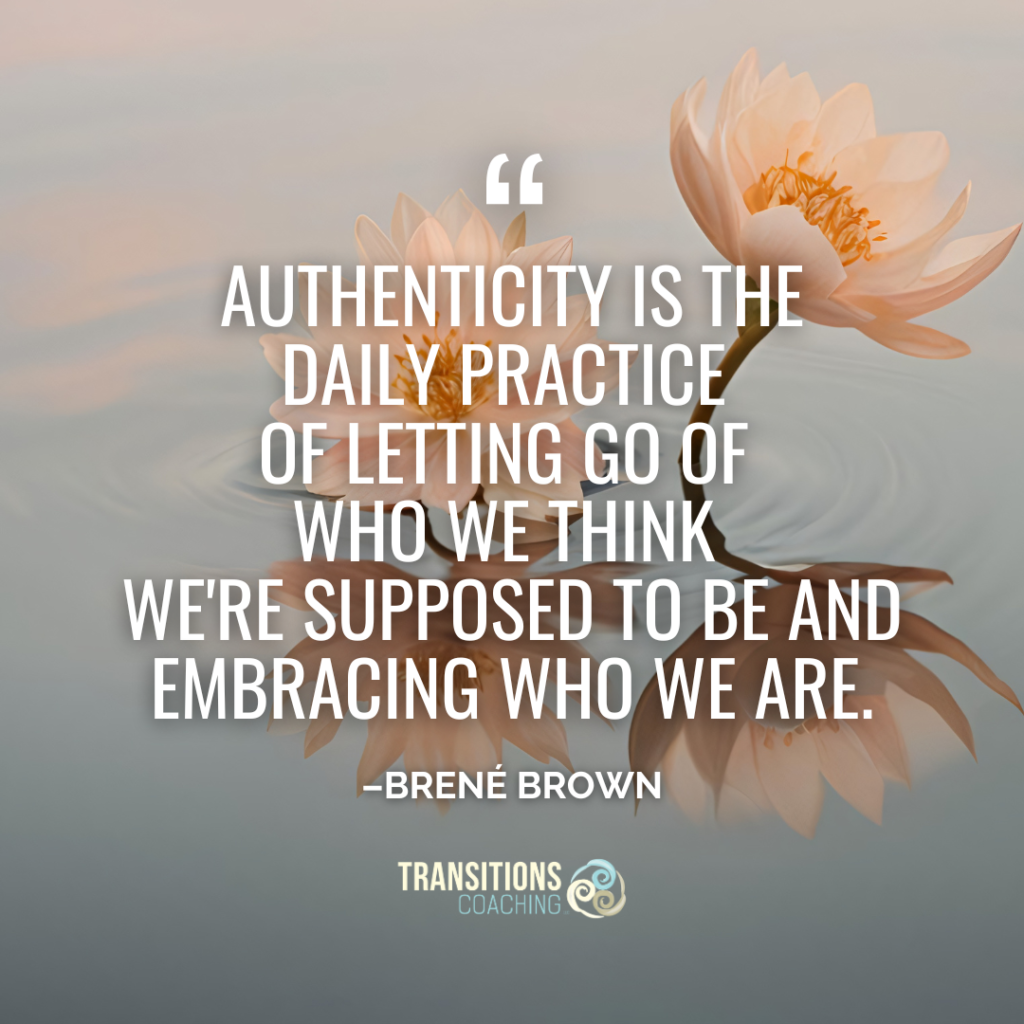
Recently, we’ve been talking a lot about what courageous authenticity is and why it’s such a powerful part of your leadership practice. At its core, it’s about leading from a place of clarity and integrity. It’s about aligning what you say with what you do, even when it feels uncomfortable.
But defining courageous authenticity isn’t the same as putting it into practice. And when it’s missing, the consequences stretch far beyond the individual leader.
That’s why we want to extend the conversation. Let’s talk about why authenticity matters so much, and what’s at risk when you fail to embrace it.
Why Courageous Authenticity Is Essential
It’s tempting to “armor up” at work, to project that you have all the answers, that you’re ready to call the shots, and that nothing can shake your confidence. But that façade rarely reflects what you might be feeling beneath the surface: uncertainty, hesitation, insecurity.
Practicing courageous authenticity requires you to put your shield down, and that can be scary (that’s why it’s called courageous authenticity!). But when you do, you start to create the conditions—in your relationships, in your organization—in which trust can thrive. That trust is the foundation for everything that makes teams resilient and effective.
Leaders who live and work from a place of truth are able to:
- Build trust and credibility. People look to leaders to set the tone. When you lead with positive intent, people feel safe to follow.
- Create psychological safety and a stronger culture. Leading with vulnerability signals that honesty is valued, not punished.
- Inspire alignment between words and actions. Demonstrating authentic leadership helps close the gap between intention and impact.
- Navigate change with integrity. Our values are most often put to the test when challenges arise. Leaders who stay anchored in their beliefs bring steadiness to uncertainty.
What’s at Risk Without Authenticity
When courageous authenticity is absent, the fractures in your culture—and your results—are likely to grow. Over time, those fissures can shape your team and impact your organization in ways that are hard to reverse.
Leaders who act without authenticity risk:
- Loss of trust and erosion of credibility. Even small inconsistencies in your words and behavior can make people question your integrity.
- Increased disengagement and cynicism. When people sense inauthenticity, they mirror it, often by pulling back or checking out.
- Higher risk of burnout. It’s draining to operate out of alignment with your values, and you may sense it through a quiet but compounding strain.
- Missed opportunities. When people don’t feel safe to speak up, fresh ideas go unheard, connections deteriorate, and collaboration suffers.
The Leadership Imperative
Leading in alignment with your values isn’t just a nice idea—it’s a leadership imperative. Without practicing courageous authenticity, you risk eroding trust, damaging culture, and weakening engagement. You compromise real progress and positive results.
This is a warning, yes, but it’s not meant to force an all-or-nothing pursuit. Practicing courageous authenticity isn’t about perfection. It’s about showing up with honesty and intention, even when it’s hard, and even when it feels uncomfortable. Over time, those moments build a leadership presence people can rely on.
Building A Lifelong Practice
As you reflect on your own leadership practice, ask yourself:
- Where might I be playing it safe instead of leading with courageous authenticity?
- What could change if I took one small, brave step toward greater alignment with my values?
If you missed our first post on what courageous authenticity is and why it matters, you can read it here. You’ll gain insight into a few practical habits that will help you cultivate a more authentic leadership practice.
At Transitions Coaching, we help people lead, work, and live more humanly, starting with uncovering the values that truly matter to you. If you’re ready to explore what authentic leadership could look like for you, we’d love to connect.




